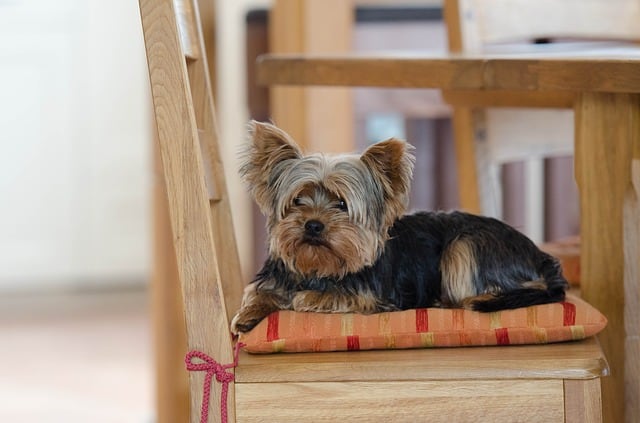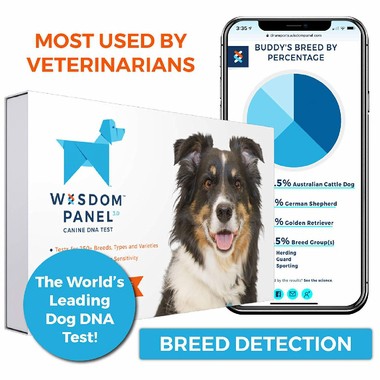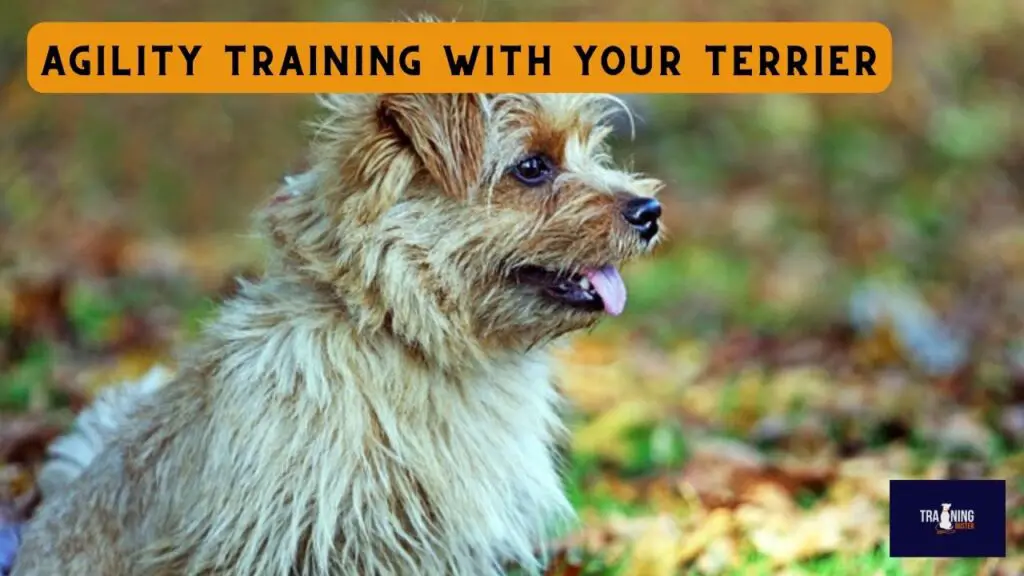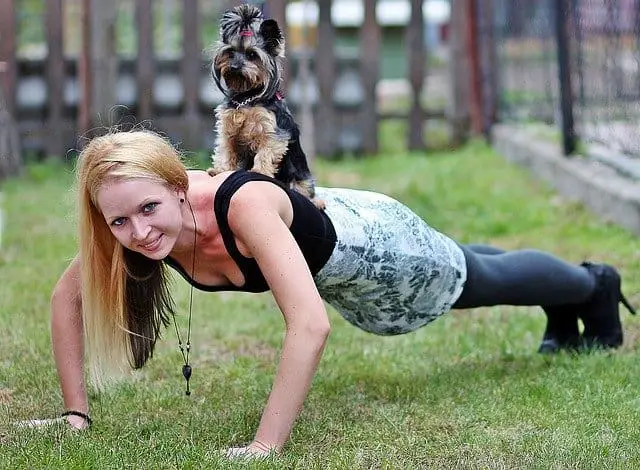
With a coat so silky, it was once said to be a product of the looms of Scotland, the lapdog once known as the Yorkshire Terrier was once popular around this area, and it’s not hard to see why.
Catching rats for the millers and miners, as useful as it is cute, the Yorkshire Terrier was first known as the “broken-haired Scotch Terrier”. The feisty breed can even trace its ancestral roots back to another big rat catcher, the Waterside Dog!
But how can you tell if a Yorkie is purebred? As such a popular breed, how do you tell a Yorkie apart from similar breeds like the Silky Terrier, Biewer Terrier, or Australian Terrier?
Well, this is exactly what we’re going to be taking a look at in this article! So, read on for how to tell if a Yorkie is a purebred:
But first How can you tell if your Yorkie is Purebred? You can use a home genetic testing for dog breeds is now an option? With Healthy Pet’s Mars Vet Dog Wisdom Panel 3.0 DNA Swab Test Kit, you can simply swab your Yorkshire Terrier’s cheek by yourself in the comfort of your own home.
Home test your Yorkie

Did you know that you can test your Yorkie’s genetics at home? Using the Healthy Pet’s Mars Vet Dog Wisdom Panel 3.0 DNA Swab Test Kit, you can quickly find out whether your Yorkie is purebred, as well as find out all sorts of other things about them!
Look into your Yorkie’s family
When you adopted your Yorkshire Terrier, where did you get them from? If you got your Yorkie from a breeder, when you chose them, you may have met the mother of the Yorkie litter, as well as the father, and maybe even your pooch’s grandparents!
If not, you may be able to find out more about your Yorkshire Terrier’s family by getting back in touch with your breeder. The breeder may be able to offer you information and documentation about your Yorkie’s parents’ pedigree, and those dogs’ own lineage.
With enough research, you may be able to trace your Yorkshire Terrier’s lineage, right back to the first registered generation of American Kennel Club Yorkshire Terriers way back in 1885!
Does your Yorkie look like the breed standard?
Another way to try to guess whether your Yorkshire Terrier is a purebred dog is to compare them to the breed standard.
According to the American Kennel Club, the Yorkie’s blue and tan coat “is parted on the face and from the base of the skull to the end of the tail hangs evenly and quite straight down each side of body”.
The AKC also says that a Yorkshire Terrier’s body should be “neat, compact and well proportioned”, while a breed standard Yorkie’s “high head carriage and confident manner should give the appearance of vigor and self-importance”.
Also, a true Yorkshire Terrier’s jaw should be “neither undershot nor overshot and teeth sound”, and their muzzle should not be too long.
What makes the Yorkie unique?
Did you know that the Yorkshire Terrier once had a job as an exterminator in the coal mines of Scotland?
Before this, though, the Yorkie was originally bred by Scottish weavers who came to the North Country of England, bringing the small companion dog along with them.
The silky, floor-sweeping breed later became a stylish lapdog to warm the laps of the trendy Victorian ladies of Yorkshire and Lancashire.
Then, at last, the Yorkshire Terrier got recognition from the English Kennel Club in 1886!
Think about your Yorkie’s temperament
No two Yorkies are the same. However, although not the most terrier-like of terriers, a purebred Yorkshire Terrier is still typically considerably stubborn, and the breed can be difficult to train if you do not start the dog’s training at an early age. Is your Yorkie like this?
In fact, if a Yorkie does not get enough consistent, firm training early on in their life, it is common for the average Yorkshire Terrier to become “yappy” and start barking excessively at every little sound they notice, from the mailman to the everyday beeps of household appliances.
However, the purebred Yorkshire Terrier is also generally quite friendly and will approach other people with ease. In fact, the somewhat loyal Yorkie does best if it can get lots of attention from its favourite people every day.
But when it comes to other dogs, in true small terrier fashion, your average Yorkie would probably immediately try to fight with them, even if the other dog is much larger than them!
This trait means that a purebred Yorkie is prone to leash aggression and barrier frustration.
What are the typical Yorkie problems?
Did you know that there are a few common health issues that the Yorkie breed often experiences?
Fortunately, a very responsible breeder will test for the most common issues in the Yorkshire Terriers they intend to breed with and won’t breed the dogs if either of them is found to have any health issues. But some other breeders do not do this.
One such common issue in purebred Yorkies is tooth retention. This is when a Yorkshire Terrier’s puppy teeth stay in their mouth and do not fall out, even when the dog becomes an adult.
Then when an affected Yorkie’s adult teeth try to come through, they are hindered or even completely prevented by the dog’s still-present puppy teeth.
Then there’s patellar luxation or slipped stifles. A common small dog’s problem; when a Yorkie has patellar luxation, this means their patella is not properly aligned, leading to the Yorkshire Terrier showing total lameness in the affected leg, or a strange walking pattern.
Although an affected Yorkie will be born with the condition, the luxation of the dog’s patella will generally not happen until much later in the Yorkshire Terrier’s life.
Whether obvious symptoms of patellar luxation show up or not, this issue can even turn into the degenerative joint disease arthritis!
How does a Yorkie look?
The American Kennel Club also has a very specific view about how a Yorkie ought to look; the dog’s hair should be “glossy, fine and silky in texture”, while the “coat on the body is moderately long and perfectly straight (not wavy)”.
When showing your Yorkie, the AKC says that the coat can be “trimmed to floor length to give ease of movement and a neater appearance”.
Whether you want to show your Yorkie or not, you’ll need to brush their coat out with an appropriate brush every day to avoid their hair getting tangled or matted.
One of the most popular handbag dogs, a purebred Yorkshire Terrier can be anywhere from 8 to 9 inches at their shoulders and is permitted to weigh only up to 7 pounds, while the AKC’s breed standard favors Yorkies of 4 to 6 pounds.
If you want to carry your Yorkshire Terrier in a handbag, it’s worth considering getting a carrier made for dogs. This can be better for your Yorkie’s health than a standard handbag. There are some equally stylish options out there!
Why not get your Yorkie tested?
Did you know that home genetic testing for dog breeds is now an option? With Healthy Pet’s Mars Vet Dog Wisdom Panel 3.0 DNA Swab Test Kit, you can simply swab your Yorkshire Terrier’s cheek by yourself in the comfort of your own home.
You then send the swab off in the included postage-paid box and will get the results of your Yorkie’s genetic background back in only 2 to 3 weeks!
Healthy Pet’s home testing kit can detect more than 250 breeds. This variety includes 99% of the breeds the AKC currently recognizes!
What’s more, this dog DNA home testing kit will test for 3 generations, up to your Yorkshire Terrier’s great grandparents.
This home dog DNA testing kit will even give you an adult weight prediction for your Yorkie so that you will be able to make better nutritional choices for your pooch.
So, if you want to quickly find out whether your Yorkie is purebred, as well as get loads of other useful information about them, this kit is the way to go.


